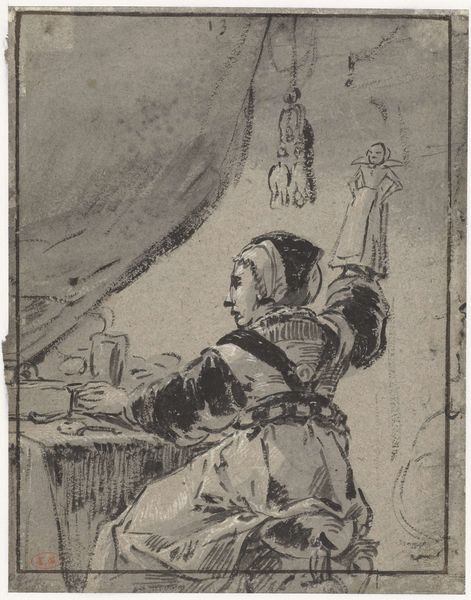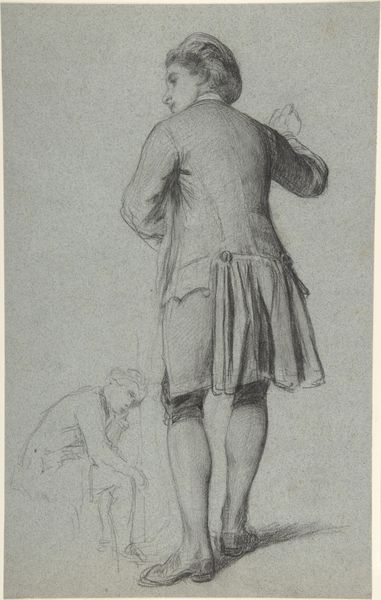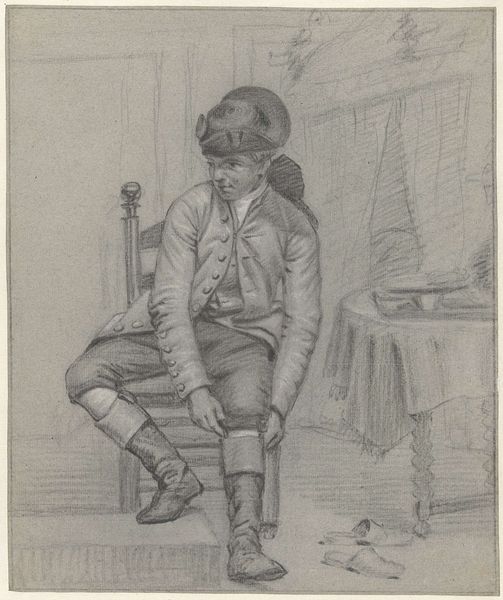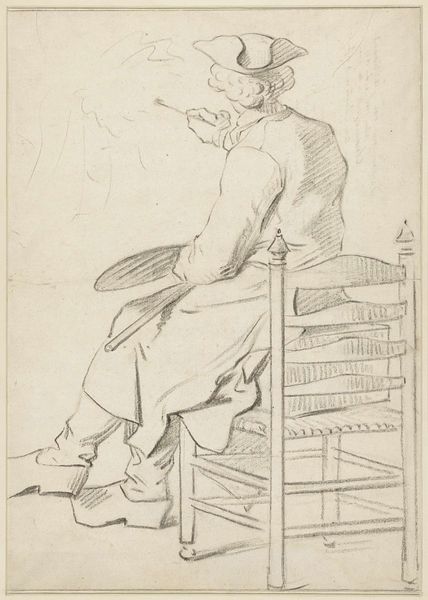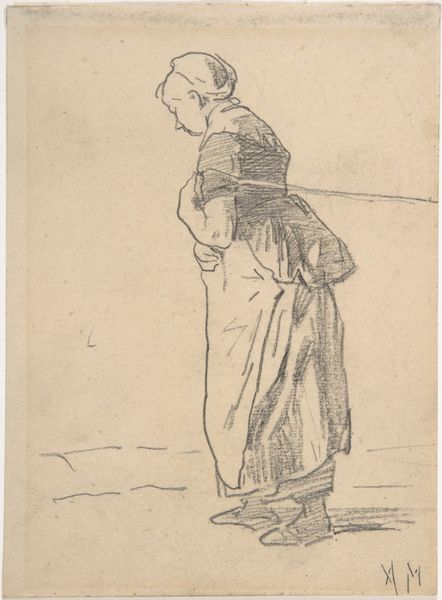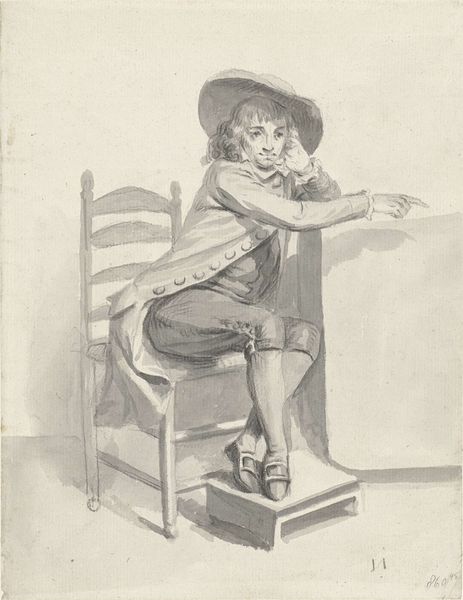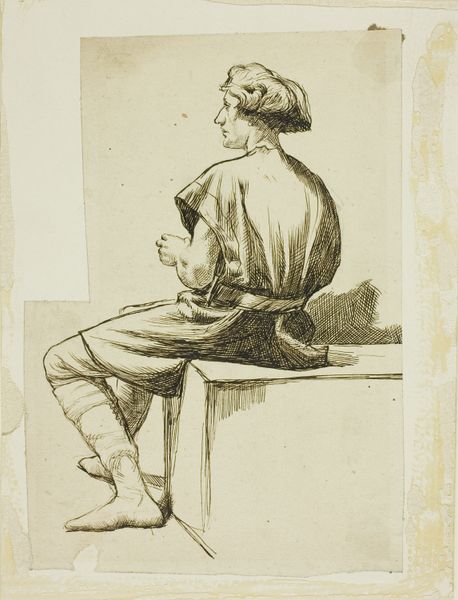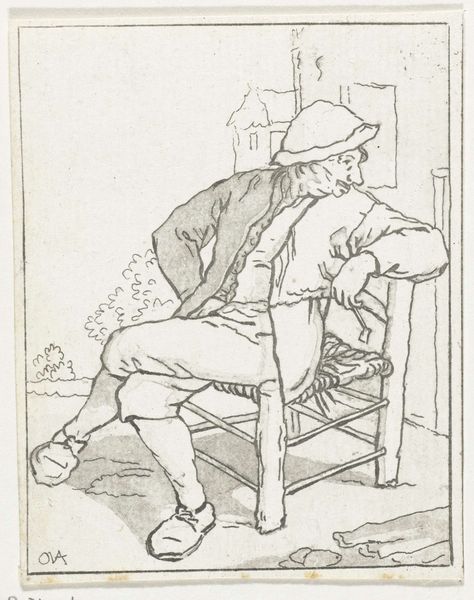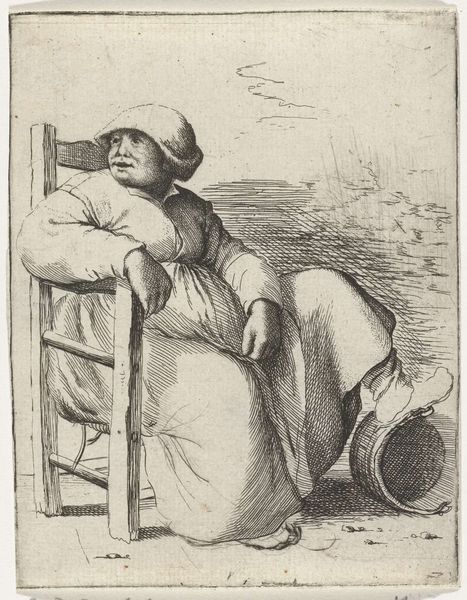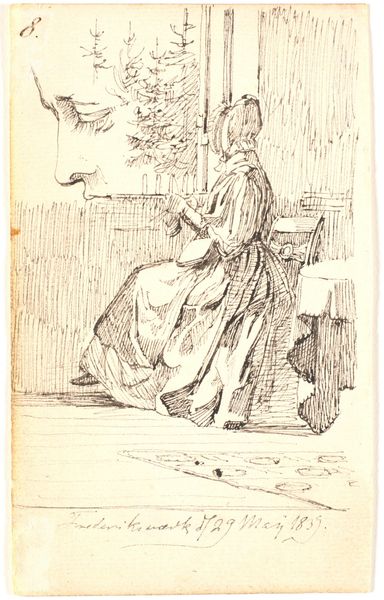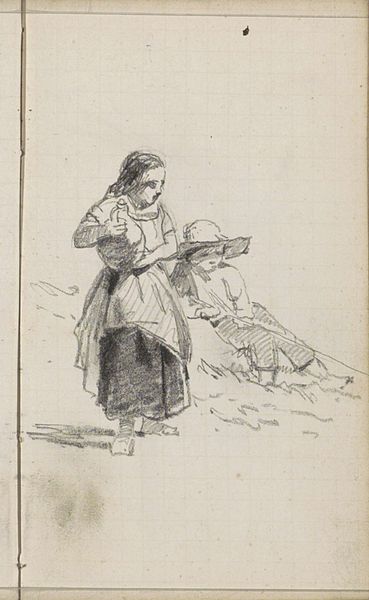
drawing, pencil
#
drawing
#
pencil sketch
#
landscape
#
figuration
#
romanticism
#
pencil
#
genre-painting
Dimensions: height 337 mm, width 279 mm
Copyright: Rijks Museum: Open Domain
Editor: We're looking at "Standing Gentleman, Seen From The Back, Leaning Over a Fence" by Jordanus Hoorn, made sometime between 1763 and 1833. It’s a pencil drawing, and I find its simplicity quite moving. What can you tell me about its place in art history? Curator: This piece offers us a fascinating window into the rise of Romanticism and its relationship to burgeoning ideas of national identity and the role of the individual. This solitary figure, turned away from us, invites the viewer to project their own emotions onto the scene. Do you think the common person would relate to this? Editor: Possibly. It feels very relatable and melancholic. The fact that he's turned away does create a sense of universality, doesn't it? I mean, we can all understand that feeling of solitary reflection, regardless of our social standing. Curator: Precisely. Figures like these appeared more and more in public imagery at that time. Why, do you suppose, would they appeal? The artist also seemed concerned about showing rural scenery as pure and untainted in this moment of pre-industrialization. What public would find that desirable, and why? Editor: Maybe to appeal to the bourgeoisie, to make them long for what was increasingly perceived to be lost because of industrialization. It's interesting how art was trying to deal with changes in society, like industrialization, that threatened older ways of life. Curator: It’s about imagining a collective identity in relation to an idealized past or landscape. And consider the medium, pencil on paper. How might this have made art more accessible and therefore more "democratic"? Editor: That's a good point. Pencils were becoming more readily available, making art creation more attainable for a wider range of people, not just the wealthy elite. I hadn’t considered that. I definitely see that Romantic element stronger now. Curator: Yes, the availability of art creation meant that anyone could imagine a public purpose for the arts, and themselves as creative contributors. This sketch isn't just a pretty picture; it's a reflection of societal shifts and who has the access and the authority to shape them through art. Editor: This makes me appreciate this simple sketch in a much broader cultural view.
Comments
No comments
Be the first to comment and join the conversation on the ultimate creative platform.
